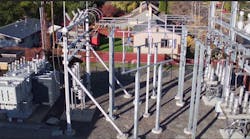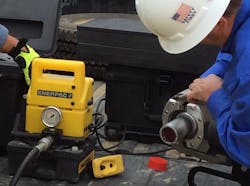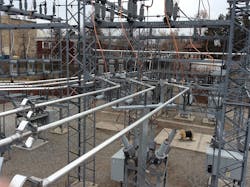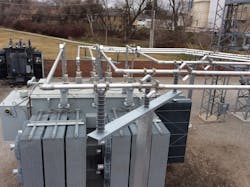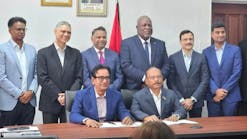Logan City Light and Power Completes Multiple Substation Upgrades
Logan City Light and Power (LCL&P), located 82 miles north of Salt Lake City, Utah has set out an aggressive substation improvement program anticipating continued growth and upgrades to substation. Some of the substations are over 50 years old. Installing new equipment and modifying bus schemes requires new fittings and connectors; a component of the improvement program LCL&P takes very seriously. Nine linemen and four substation technicians maintain the municipal utility’s electrical system, ranked one of the lowest system interruption rates in the western states.
In addition to securing the latest equipment and technology, LCL&P specified that fittings and connections meet or exceed ANSI C119.4 and NEMA CC1 standards. New equipment is specified to perform in accordance with ANSI and IEEE standards. Equipment bid packages also require field testing by LCL&P engineers to independently verify the manufacturer’s test results.
Substation #3
In 2015, a 40 KMV power transformer was installed at Substation #3 in downtown Logan City replacing two older 20 KMV transformers. The new transformer would not fit in the existing lattice structure, so it was set south of the lattice structure with a two‐inch ring bus looping to the high side of the 40 MVA transformer. A four‐inch bus was installed from the low side back through the lattice structure, replacing all of the old copper bus work.
Crews learn correct and safe operation of the 65‐ton swage press with a 2‐inch head and dies on ground first, making a quality seamless extruded electrical grade bus connection.
AFL’s (Duncan, SC) Swage connectors and fittings were used to accommodate the 60‐day outage window when the new transformer was installed. The superior 360‐degree swaging procedure takes minutes rather than hours to complete when compared to same‐type welded and bolted connectors. Given the unfortunate delivery window of January for the 40 KMV transformer, a worst‐case scenario for bad weather in Utah, LCL&P also opted to utilize Swage Technology. Swaging is not affected by inclement weather—even sub‐zero temperatures. The manufacturer (AFL) also provides training with its Swage products for the safety of the crews and to guarantee the quality of the connections.
Substation #7
In 2016, a new 30 MVA 46/12.5 transformer was installed in Substation #7. Construction drawings specified a four‐inch aluminum bus from the low side bushings of a 40 MVA transformer to the metalclad switchgear building.
AFL, the only company in the United States to offer a complete line of substation accessories of bolted, welded, Swage, and standard compression fittings, supplied most of the substation improvement materials. The single‐source capability saved LCL&P considerable time and money.
All types of connectors—4‐inch Swage bus connections, bolted support terminals and T‐tap connections, 90‐degree Swage elbow connections and an end‐run tap to standard copper compression connections and insulator pads welded to an A‐frame structure.
Substation #6
In the Spring of 2017, substation improvement projects included installing a new high side structure with two new 40 kV line‐breakers at Substation #6, tied together with a two‐inch Aluminum ring bus. The two‐inch bus was tapped off and into a new 30 MVA transformer. LCL&P crews also installed a new 15 kV Switchgear and all components at Substation #6, with all new 1100 MCM URD feeders out of the substation.
Swaging
Where applicable, the preferred connector and fitting solution for substation improvements has been AFL’s Swage solution. Timing has been critical when a substation has to be de‐energized and offloaded to another substation. Most Swage connections take 10 to 11 seconds to swage. More important to LCL&P was creating permanent connections. Stephen Crosby, LCL&P’s Distribution Manager, says, “All of the Swage parts fit together perfectly. Each time we made a crimp, the bus would quickly become more rigid without any problems. AFL’s Swage products made it simple for us to do the work.”
Swaging also eliminated the integrity issues associated with welded connections in the heat‐affected zone and minimizes the need for future maintenance and bolt tightening; a requirement when using bolted fittings. LCL&P crews use AFL’s Go/No‐Go Swage Inspection Gauge to confirm proper 360‐degree full compression after each swage procedure.
Swage‐type expansion couplers, 90‐degree swaged elbows, bolted bus support connectors and 4‐inch welded bus fittings on the bus side were utilized to adapt Substation #6 for two 20 MVA transformers.
Conclusion
Logan City’s substation improvements are ongoing. The upgrades and expansions will provide higher load capacity and redundancy as well as off‐loading capability for other LCL&P substation repairs and improvements. Most important, the added capacity enables LCL&P to confidently serve its 50,000 residential, commercial, and industrial customers and the 28,800 undergraduate and graduate students attending Logan City’s Utah State University.
